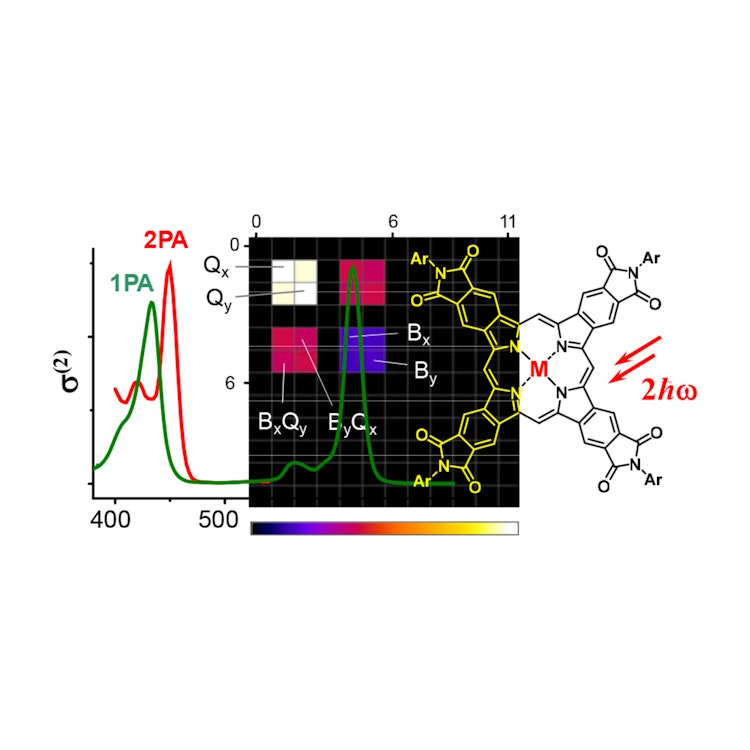
Stabilizing g‑States in Centrosymmetric Tetrapyrroles: Two-Photon- Absorbing Porphyrins with Bright Phosphorescence
Using time-dependent density functional theory (TDDFT) and sum-overstates (SOS) formalism, we predicted significant stabilization of 2P-active g-states in a compact fully symmetric porphyrin, in which all four pyrrolic fragments are fused with phathalimide residues via the β-carbon positions. The synthesis of a soluble, nonaggregating meso-unsubstituted tetraarylphthalimidoporphyrin (TAPIP) was then developed, and the spectroscopic measurements confirmed that a strongly 2P-active state in this porphyrin is stabilized below the B (Soret) state level. Single-crystal X-ray analysis revealed near-ideally planar geometry of the TAPIP macrocycle, while its tetra-meso-arylated analogue (meso-Ar4TAPIP) was found to be highly saddled. Consistent with these structural features, Pt meso-Ar4TAPIP phosphoresces rather weakly (ϕphos = 0.05 in DMF at 22 °C), while both Pt and Pd complexes of TAPIP are highly phosphorescent (ϕphos = 0.45 and 0.23, respectively). In addition PdTAPIP exhibits nonnegligible thermally activated (E-type) delayed fluorescence (ϕfl(d) ∼ 0.012). Taken together, these photophysical properties make metal complexes of meso-unsubstituted tetaarylphthalimidoporphyrins the brightest 2P-absorbing phosphorescent chromophores known to date.
Download
esipova_2017.pdfResearchers

